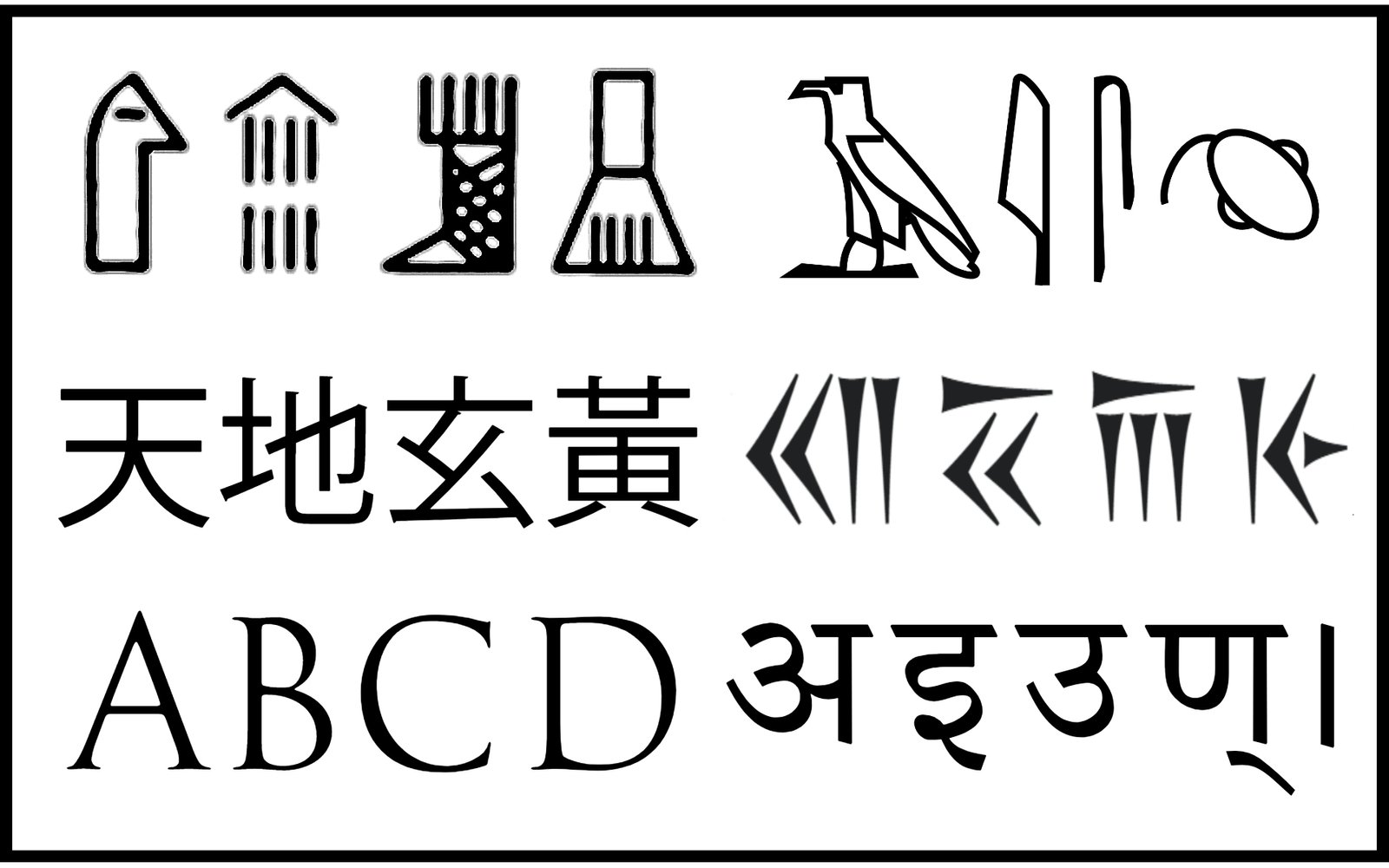India’s history is replete with the evolution of diverse scripts and writing systems that reflect its rich cultural and linguistic heritage. From the earliest inscriptions to contemporary alphabets, the development of writing in India offers a fascinating glimpse into the subcontinent’s past. This article delves into the evolution of Indian scripts, exploring their origins, transformations, and cultural significance.
1. The Dawn of Writing in Ancient India
1.1. Indus Valley Script
Overview: The earliest known writing system in India dates back to the Indus Valley Civilization (c. 2600–1900 BCE).
Key Points:
- Undeciphered Script: Despite numerous attempts, the script remains undeciphered.
- Pictographic Symbols: The script consists of various pictographic symbols found on seals, pottery, and tablets.
Examples:
- Indus Seals: Artifacts bearing short sequences of symbols, possibly used for trade and administrative purposes.

1.2. Brahmi Script
Overview: The Brahmi script, emerging around the 3rd century BCE, is considered the progenitor of many Indian writing systems.
Key Points:
- Deciphered by James Prinsep: The script was deciphered in the 19th century, unlocking ancient texts.
- Ashokan Inscriptions: Emperor Ashoka’s edicts, inscribed on pillars and rocks, are among the earliest examples.
Examples:
- Ashokan Edicts: Inscriptions promoting Buddhist teachings and moral guidelines across the Mauryan Empire.
2. Evolution of Regional Scripts
2.1. Gupta Script
Overview: The Gupta script, developing during the Gupta Empire (c. 320–550 CE), is a significant precursor to modern Indian scripts.
Key Points:
- Development from Brahmi: The script evolved from the Brahmi script, featuring more rounded characters.
- Literary Contributions: Many classical Sanskrit texts were written in Gupta script.
Examples:
- Classical Texts: Manuscripts of Kalidasa’s plays and scientific texts by Aryabhata.
2.2. Devanagari Script
Overview: The Devanagari script, used for writing Hindi, Sanskrit, Marathi, and other languages, evolved from the Gupta script.
Key Points:
- Standardized Form: Gained prominence around the 10th century CE, becoming the standard script for Sanskrit.
- Widely Used: One of the most widely used scripts in India today.
Examples:
- Religious Texts: Manuscripts of the Vedas, Puranas, and epics like the Ramayana and Mahabharata.
3. South Indian Scripts
3.1. Tamil-Brahmi and Vatteluttu
Overview: South India developed distinct scripts like Tamil-Brahmi and Vatteluttu, with roots in the Brahmi script.
Key Points:
- Tamil-Brahmi: An early script used for Tamil inscriptions.
- Vatteluttu: Evolved into the modern Tamil script and influenced other South Indian scripts.
Examples:
- Tamil Inscriptions: Early Sangam literature and temple inscriptions.
3.2. Grantha Script
Overview: The Grantha script, used primarily in Tamil Nadu and Kerala, was developed to write Sanskrit texts in South India.
Key Points:
- Sanskrit Manuscripts: Widely used for Sanskrit religious and scholarly works.
- Influence: Contributed to the development of modern Tamil and Malayalam scripts.
Examples:
- Manuscripts: Texts of the Upanishads and Smritis in South India.
4. Eastern and Western Indian Scripts
4.1. Bengali and Assamese Scripts
Overview: The Bengali and Assamese scripts, derived from the Eastern Nagari script, are used in the eastern regions of India.
Key Points:
- Distinct Characters: Feature distinct rounded characters suitable for the phonetic needs of the languages.
- Literary Heritage: Rich literary traditions in both Bengali and Assamese.
Examples:
- Classical Literature: Works of Rabindranath Tagore and Bhupen Hazarika.
4.2. Gujarati Script
Overview: The Gujarati script, derived from the Devanagari script, is used for writing the Gujarati language.
Key Points:
- Simplified Form: Lacks the horizontal line that is characteristic of Devanagari.
- Commercial Use: Historically used in trade and commerce due to Gujarat’s mercantile tradition.
Examples:
- Literary Works: Writings of Mahatma Gandhi and modern Gujarati literature.
5. Modern Adaptations and Contemporary Use
5.1. Impact of Printing and Digital Technology
Overview: The advent of printing and digital technology has significantly influenced the evolution and standardization of Indian scripts.
Key Points:
- Printing Press: Facilitated the mass production of books and literature in regional languages.
- Digital Fonts: Development of Unicode fonts has standardized scripts for digital use.
Examples:
- Publications: Newspapers, books, and online content in multiple Indian languages.
5.2. Script Reform and Simplification
Overview: Efforts have been made to simplify and reform scripts to enhance literacy and ease of learning.
Key Points:
- Educational Reforms: Introduction of simplified scripts in educational curricula.
- Standardization Efforts: Government and linguistic bodies working towards script standardization.
Examples:
- Simplified Scripts: Efforts to create simplified versions of Devanagari and other scripts for easier learning.
6. Cultural and Linguistic Significance
6.1. Preservation of Heritage
Overview: Writing systems are a crucial part of India’s cultural and linguistic heritage, reflecting its history and diversity.
Key Points:
- Historical Records: Inscriptions and manuscripts as vital historical sources.
- Cultural Identity: Scripts as a symbol of linguistic and cultural identity.
Examples:
- Inscriptions: Preservation of ancient inscriptions in museums and heritage sites.
6.2. Future Prospects
Overview: The future of Indian scripts lies in balancing preservation with modernization and technological advancements.
Key Points:
- Digital Integration: Incorporating scripts into digital platforms to ensure their continued use.
- Educational Initiatives: Promoting the study and use of regional scripts in schools and universities.
Examples:
- Digital Archives: Online repositories of ancient manuscripts and inscriptions.
- Educational Programs: Language and script courses in academic institutions.
Conclusion
The evolution of script and writing systems in India is a testament to the country’s rich cultural and linguistic history. From ancient inscriptions to modern digital fonts, the journey of Indian scripts reflects the dynamic and diverse nature of Indian civilization. Preserving and promoting these scripts is essential for maintaining India’s cultural heritage and ensuring its continued linguistic diversity.

